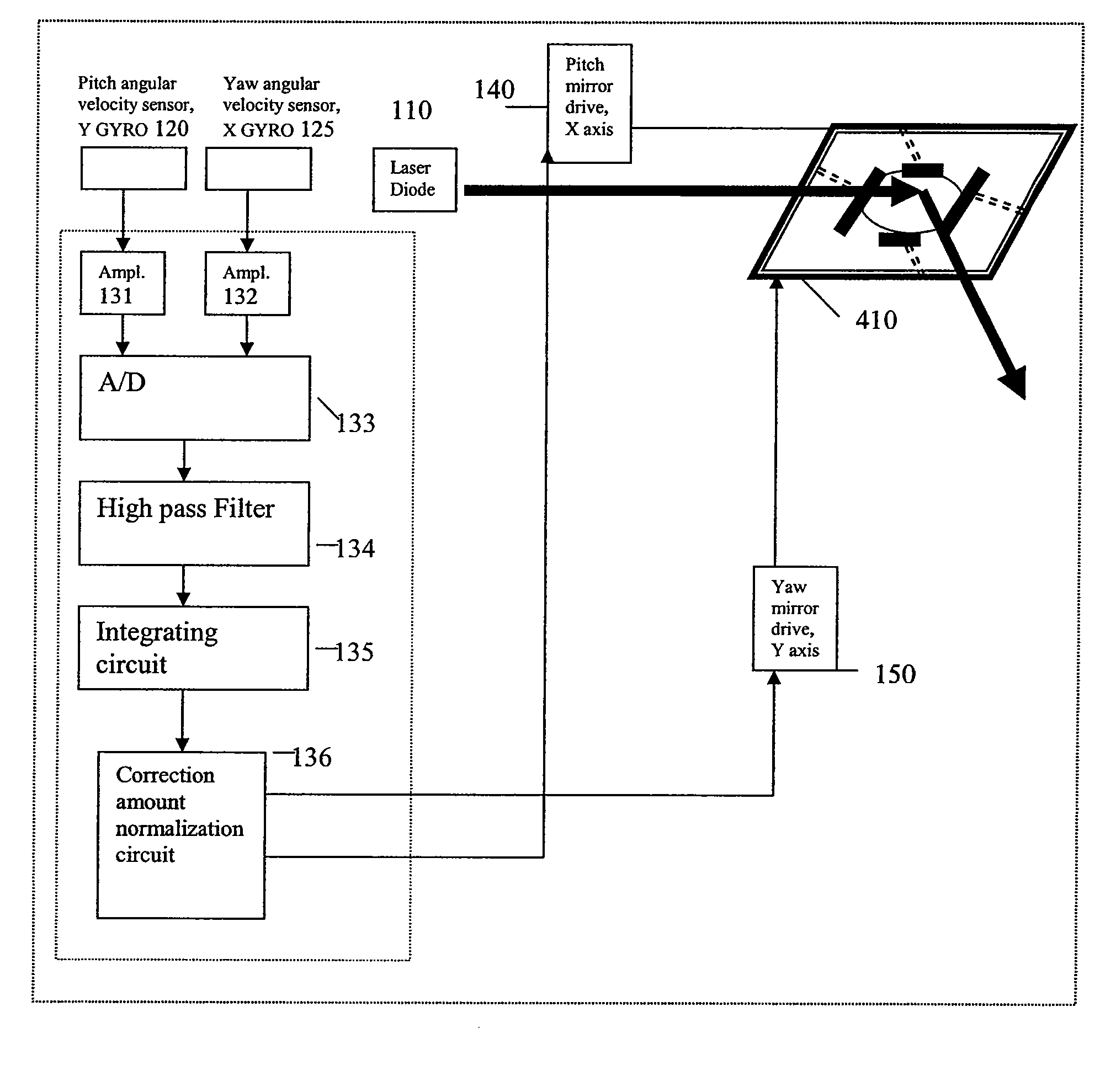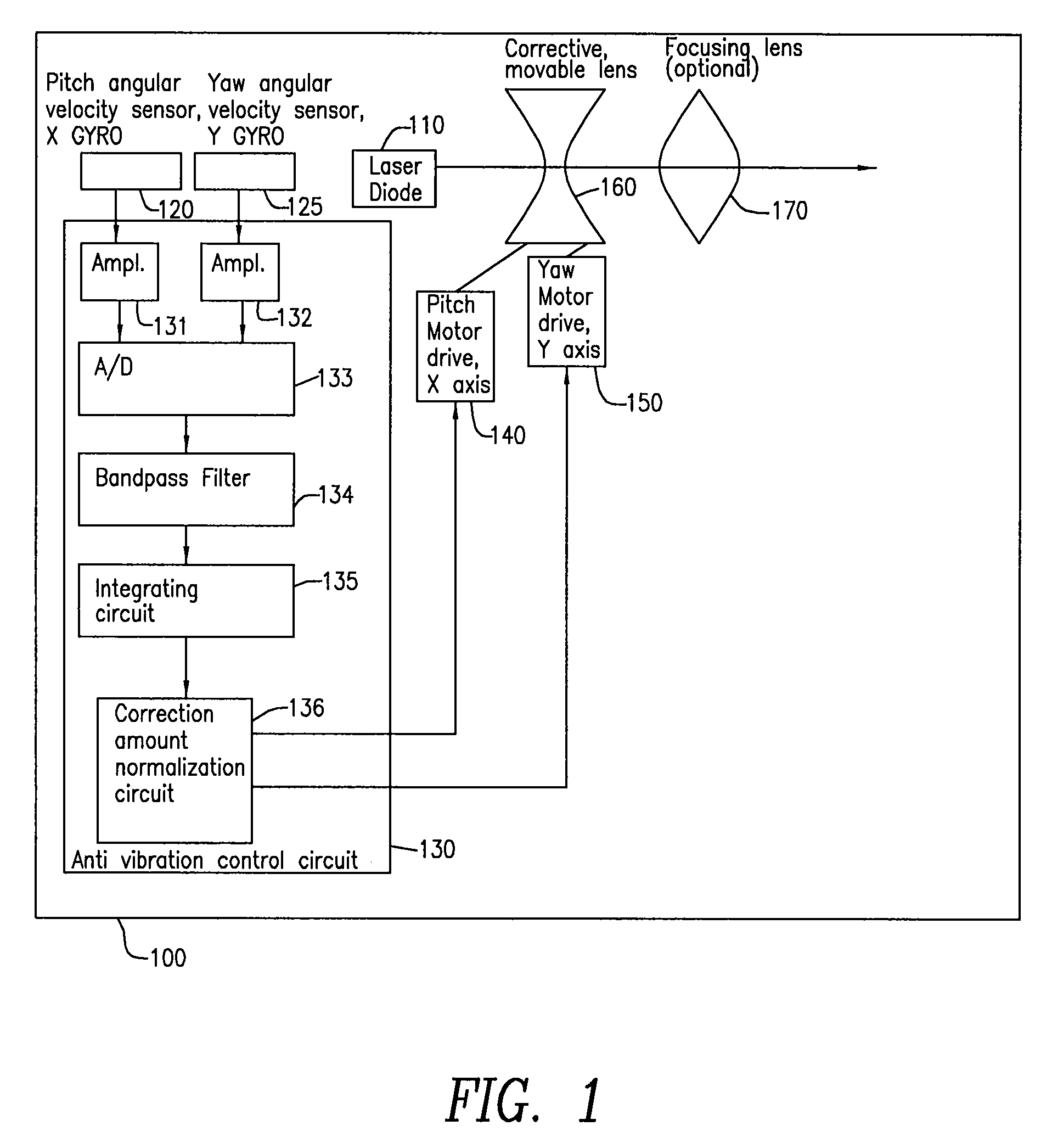Motion compensated light-emitting apparatus
a light-emitting apparatus and motion-recognition technology, applied in the direction of optical radiation measurement, instruments for comonautical navigation, instruments, etc., can solve the problems of unintentional angular and/or translation, unsteady light column, and affect the conventional light-emitting device, etc., to achieve low power consumption and vibration stability, high output, and high mobility
- Summary
- Abstract
- Description
- Claims
- Application Information
AI Technical Summary
Benefits of technology
Problems solved by technology
Method used
Image
Examples
Embodiment Construction
[0046]FIG. 1 is a diagram of a laser diode pointer 100 which includes vibration or motion compensation circuitry in accordance with an embodiment of the invention. A visible laser diode 110 may be used as the light source. There are several ways of implementing the vibration compensation scheme. In accordance with an embodiment of the invention, two angular velocity sensors (gyros) 120 and 125 are aligned in orthogonal directions and used to measure the angular movements in the pitch and yaw axis (also referred to as the X and Y axis). In a preferred embodiment, the two miniature gyroscopes comprise, for example, a micro electro mechanical system (“MEMS”), such as model ADXRS150 manufactured by Analog Devices, Inc. These gyros may have a relatively small volume (such as less than 0.15 cm3), low weight (such as less than 500 mg), and small size (such as 7 mm×7 mm×3 mm or less). In another embodiment of the present invention, a motion-compensating light-emitting device is provided whi...
PUM
 Login to View More
Login to View More Abstract
Description
Claims
Application Information
 Login to View More
Login to View More - R&D
- Intellectual Property
- Life Sciences
- Materials
- Tech Scout
- Unparalleled Data Quality
- Higher Quality Content
- 60% Fewer Hallucinations
Browse by: Latest US Patents, China's latest patents, Technical Efficacy Thesaurus, Application Domain, Technology Topic, Popular Technical Reports.
© 2025 PatSnap. All rights reserved.Legal|Privacy policy|Modern Slavery Act Transparency Statement|Sitemap|About US| Contact US: help@patsnap.com



